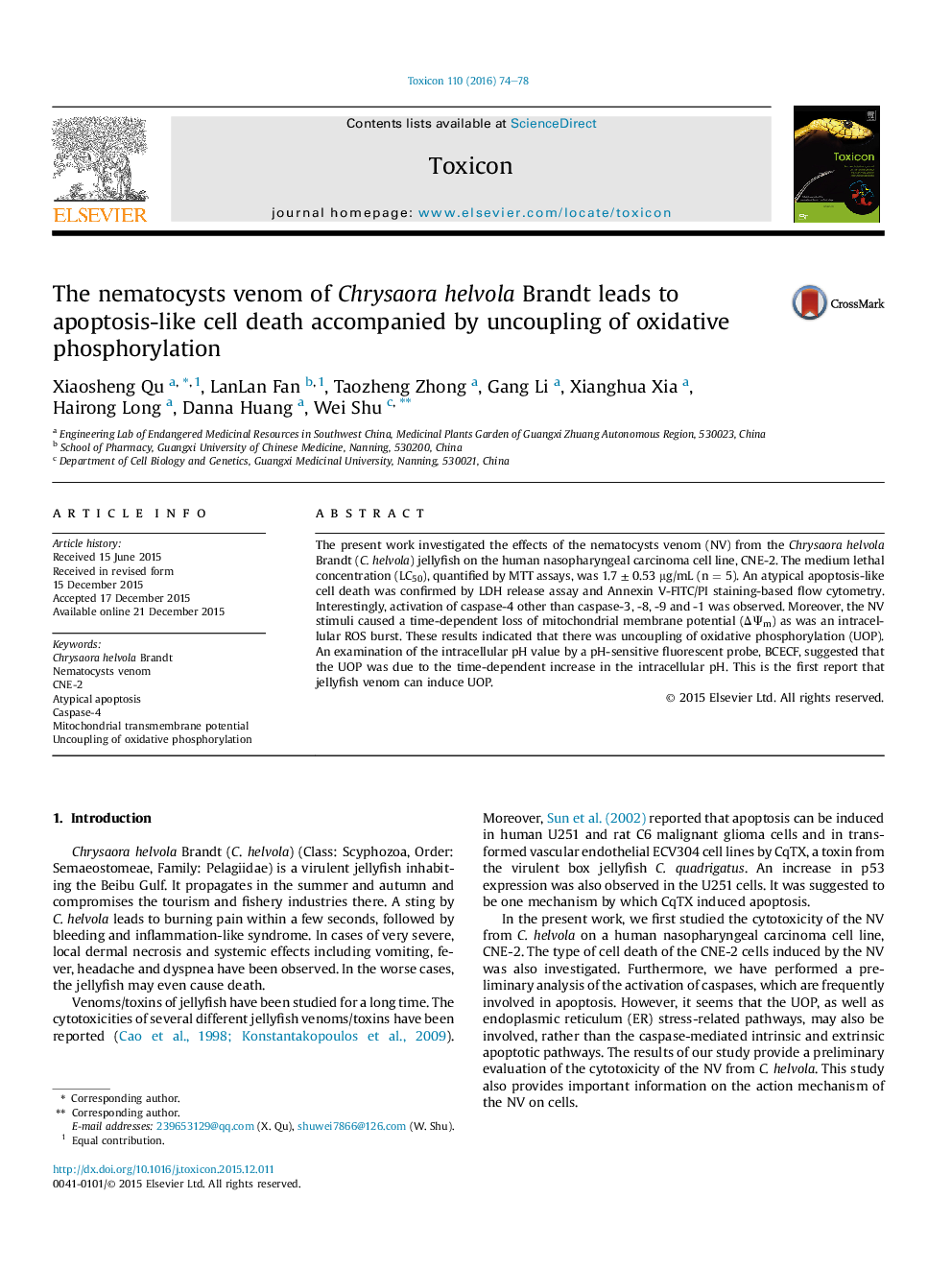| Article ID | Journal | Published Year | Pages | File Type |
|---|---|---|---|---|
| 2064143 | Toxicon | 2016 | 5 Pages |
•Nematocyst venom from Chrysaora helvola Brandt induces apoptosis-like cell death on CNE-2 cells.•Nematocyst venom induces ΔΨm collapse and uncoupling of oxidative phosphorylation.•Nematocyst venom induces an increase of intracellular pH.
The present work investigated the effects of the nematocysts venom (NV) from the Chrysaora helvola Brandt (C. helvola) jellyfish on the human nasopharyngeal carcinoma cell line, CNE-2. The medium lethal concentration (LC50), quantified by MTT assays, was 1.7 ± 0.53 μg/mL (n = 5). An atypical apoptosis-like cell death was confirmed by LDH release assay and Annexin V-FITC/PI staining-based flow cytometry. Interestingly, activation of caspase-4 other than caspase-3, -8, -9 and -1 was observed. Moreover, the NV stimuli caused a time-dependent loss of mitochondrial membrane potential (ΔΨm) as was an intracellular ROS burst. These results indicated that there was uncoupling of oxidative phosphorylation (UOP). An examination of the intracellular pH value by a pH-sensitive fluorescent probe, BCECF, suggested that the UOP was due to the time-dependent increase in the intracellular pH. This is the first report that jellyfish venom can induce UOP.
